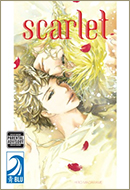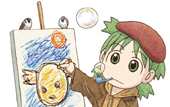   |
Manga-ka: Osamu Tezuka
Publisher: Vertical
Rating: Older Teen (16+)
Release Date: December 2008
Synopsis: “A secret U.S. chemical weapon called “MW” accidentally leaks and wipes out the population of a southern Japanese island. Though Michio Yuki survives, he emerges from the ordeal without a trace of conscience. MW is manga-god Osamu Tezuka’s controversial testament to the Machiavellian character and features his most direct engagement of themes such as transvestism and homoeroticism. MW is a chilling picaresque of evil. Steering clear of the supernatural as well as the cuddly designs and slapstick humor that enliven many of Tezuka’s better-known works, MW explores a stark modern reality where neither drive nor secular justice seems to prevail.”
A pretty far cry from the previews of Astro Boy I’ve read and my recently enjoyed copy of Black Jack, Osamu Tezuka’s MW is a much darker story that follows a conniving man of exceptional beauty and intellect as he seeks to own what could the most dangerous toxic chemical on Earth. With a goal to kill all humankind, and a thrill from the suffering caused for all stepping stones on his path, Michio Yuki is a man on a hideously twisted mission and loving nearly every moment of it.
I went into MW with a general idea of what I was getting into, eager to read a psychological horror story done by the same man who wrote Black Jack. Michio Yuki is certainly a force to be reckoned with, though not one I’d ever wish upon anyone. His lack of conscience is evident in near-everything he does, from rape to murder; he does anything he wishes out of plot or play. His intelligence is impeccable and there’s a sick pleasure in watching him cover his tracks after each incident, not to mention his ease in using his brain, body or resources to his benefit.
In contrast to Michio Yuki, there’s Father Garai, a priest who feels a horrendous guilt at his knowledge of Michio’s crimes and his lack of conviction to turn him in. He feels a twisted obligation to the boy after an incident fifteen years ago saw to the creation of Michio Yuki today. Father Garai is continuously seduced into sexual acts with Michio as well, leaving him all the more torn and disgusted at his own actions, predomiantly in that he’s constantly unable to turn away the advances despite all he knows. Eventually he can no longer take what Michio is doing and begins on the dangerous road of trying to stop him. To his dismay, however, Michio knows the priest too well and all efforts are hit with one roadblock after another in a frustrating chain of events.
At first I was constantly surprised at the brutality of the story, but it’s all a part of learning what kind of story you’re getting into. Michio is a well-crafted character, and one such a particular brand of evil that you hope he gets what’s coming at the end, though at the same time regretting that it could end the story too soon. I felt so sympathetic to Garai, even after my haunting suspicion regarding him and Michio comes to light at the book’s end. I kept silently cheering for his resolve in turning Michio in and then consequently cursing at foiled attempts. The story also involves many secondary characters, some more relevant than others, but it doesn’t take long to begin questioning how long someone has the moment they get involved with Michio.
The end of MW proved on the predictable side, but despite the clearly devised plot twist that would mark the book’s end, it was still fantastically potent and left me just as chilled as the rest of the story had up until that point. MW manages to keep you on edge throughout the plot, and then by dropping a neatly placed bombshell at the end, makes sure the feeling sticks well after you’re done.
The artwork of the story doesn’t suit the subject matter as neatly as Osamu Tezuka’s other work, but the kind of out-of-place cartoon style acting as the medium for such explicit content does offer its own interesting appeal. Some moments however, such as the Priest’s comedic fanged growls in protest of Michio’s actions, were too strong a contrast and pulled me out of the story. As the story was drawn and written in the seventies, everything also has a retro look compared to the more contemporary stories of this nature readers may be used to today, but the timeline of the story doesn’t cause much grief to the reading experience so much as the dated-nature of the artwork itself occasionally does.
A recommended read for those who enjoy a twisted but engaging story. You may feel a little ill, dirty, or perhaps just white-knuckled from suspense or disbelief, but you’ll be no less impressed with the storytelling skill Osamu Tezuka portrays as he lets out his darker authorial side for a story that, while feeling a little dated for current readers at times, is no less compelling.
Review written May 21, 2009 by Lissa Pattillo
Book borrowed from Halifax Public Libraries


 Follow
Follow
























[…] (Slightly Biased Manga) Oyceter on vols. 6 and 7 of Mushishi (Sakura of DOOM) Lissa Pattillo on MW (Kuriousity) Connie on vol. 3 of St. Dragon Girl (Slightly Biased Manga) Billy Aguiar on vol. 1 of […]